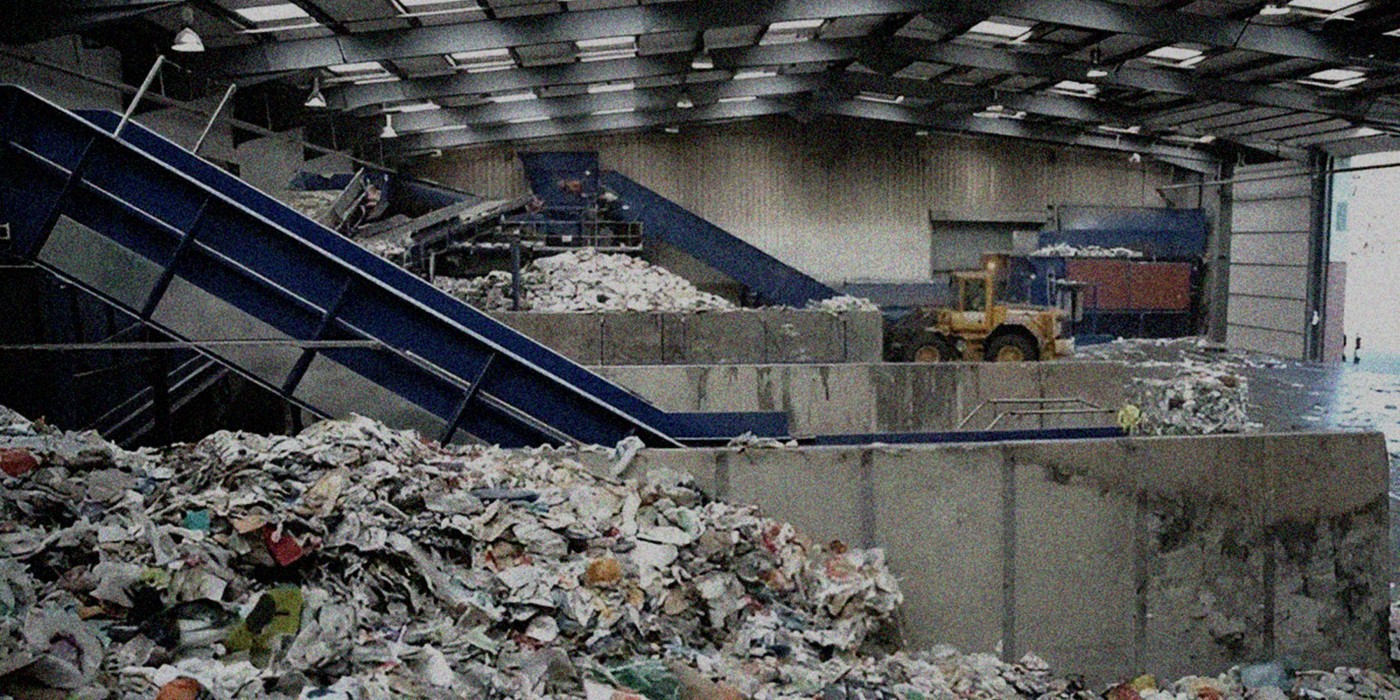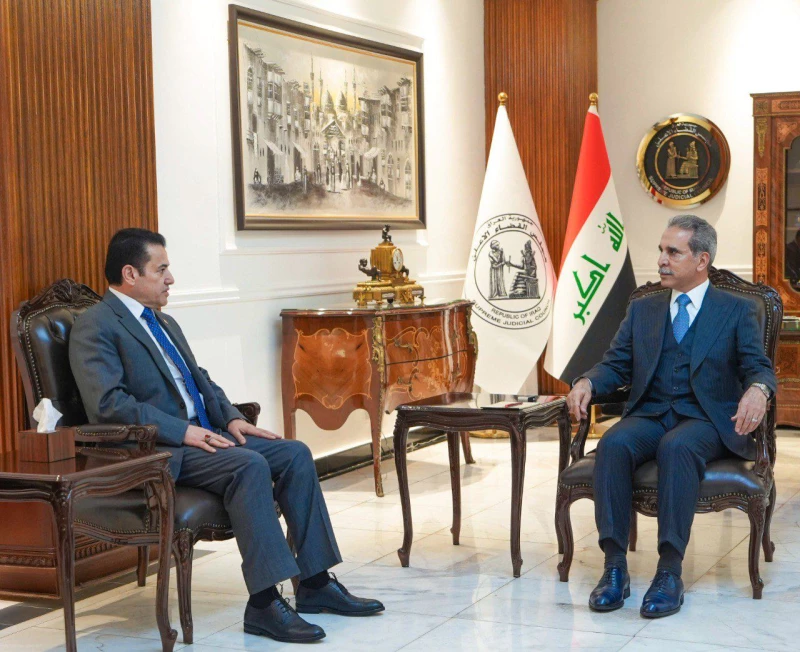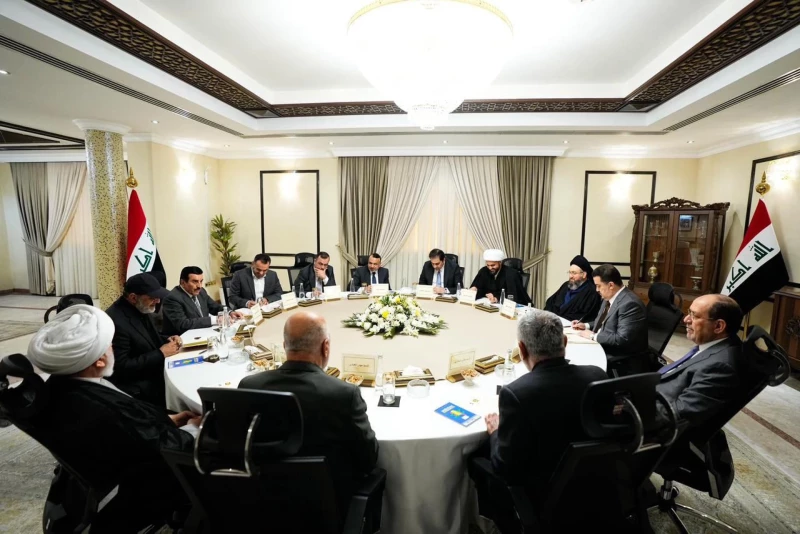BAGHDAD, Iraq - The sprawling landfill sites within the capital Baghdad stand as Iraq's largest, a consequence of the city's burgeoning population exceeding 9 million, as per data released by the Ministry of Planning. This stark reality presents a myriad of pressing concerns, chief among them the perilous proximity of numerous dumpsites to residential neighborhoods, the alarming depletion of green spaces, and the looming specter of disease outbreaks.
Yet, the quandary of disorderly landfill sites extends beyond the bounds of Baghdad alone; such sites are strewn throughout all cities in Iraq.
Studies and research undertaken by Iraqi universities have unveiled a disconcerting truth: the actuality of landfill management in certain provinces of Iraq diverges significantly from the human and mechanical endeavors invested in waste collection and transportation.
This discrepancy arises from several factors, notably the absence of stringent environmental standards for landfill sites coupled with their lack of proper fencing, lax oversight concerning the movement of specialized sanitation vehicles, and the failure of Baghdad Municipality to embrace contemporary scientific methodologies for secure waste disposal.
Furthermore, the deficiency of regular transfer stations within municipal departments exacerbates the situation, compounded by design flaws in the construction of such facilities.
Within landfill sites, waste is haphazardly strewn and frequently subjected to burning. It lacks proper stratification, compaction through mechanical processes, or the application of soil layers to deter accumulation.
The transfer zones suffer from a dearth of pesticide spraying to curb the proliferation of rodents and insects, compounded by an absence of facilities and factories dedicated to waste recycling and utilization.
Mohammed al-Rubaie, the media and relations officer at the Baghdad Municipality, told The New Region that the current waste collection method is alarmingly primitive.
He elaborated, stating that waste collection unfolds in two rudimentary stages: initially transporting the waste to rudimentary landfill sites in the vicinity, termed as stations, and subsequently transferring it to ultimate disposal sites.
He underscored the presence of "two landfill sites, the first situated in the Nibaai area north of Baghdad, capable of handling 7,000 tons daily, while the second site in the Nahrawan area south of Baghdad manages approximately 3,000 tons daily."
He emphasized that "despite the municipality's vehicles collecting over 9,000 tons of waste from all corners of Baghdad, there's no tangible benefit derived from it."
As per data provided by the Central Statistical Organization under the Ministry of Planning, the tally of landfill sites in Iraq surged to 221 by 2021, with the Kurdistan Region excluded from the count.
Alarmingly, among these sites, a staggering 149 were flagged for non-compliance with regulations and were devoid of essential environmental approvals.
The issue of landfill in Baghdad has exacerbated, particularly post-2003, in tandem with the population surge witnessed in the capital. Since 2012, the Baghdad Municipality has designated an approximate five-hectare tract of land adjacent to the al-Adl district, al-Hurriyah City, and al-Bayaa district in Karkh for landfill and debris transfer operations, eliciting ire from local residents.
The improper incineration of waste at landfill sites proximate to residential zones fosters the dissemination of towering plumes of noxious smoke and the release of ammonia gas generated by the breakdown of uncovered materials.
Consequently, this hazardous practice precipitates respiratory ailments such as asthma and a spectrum of skin disorders among inhabitants.
"Our neighborhood has been transformed into a dumping ground for refuse, emitting foul odors and hazardous fumes emanating from the combustion of extensive heaps of trash,” Hassan Ali, a resident of the al-Hurriyah area, said. “Residents are apprehensive about the potential outbreak of diseases attributable to the proliferation of waste, which has evolved into a haven for stray animals and dogs."
He added that "the landfill site is situated right alongside residential homes, and Baghdad Municipality vehicles fail to make daily visits for waste removal. Consequently, refuse accumulates at this location for more than a week, forming towering mounds left uncleared. Moreover, waste is frequently incinerated on-site."
Ali condemned "the establishment of indiscriminate waste stations within residential vicinities, disregarding basic health standards."
Environmental activist Omar Abdul Latif, in an interview with The New Region, asserted that “in 1990, landfills were appropriately located before Baghdad experienced significant population growth. However, the waste predicament surfaced post-2003, resulting in landfill sites encroaching upon residential neighborhoods and apartment complexes."
He further elaborated, stating that "certain waste stations were established back in the 1980s when landfill sites were devoid of habitation. However, these sites have since become problematic, manifesting negative repercussions, notably water seepage into the soil, resulting in harm to agricultural lands, alongside the proliferation of insects."
Raji Talib, the Director-General of the Technical Department at the Ministry of Environment, recommended "entrusting the waste management dossier in Baghdad to specialized investment firms." He highlighted the "successful precedent in numerous provinces that have harnessed cutting-edge technologies, encompassing recycling, sorting, and processing facilities."
The Baghdad Municipality attributes the scarcity of adequately sized land parcels within appropriate locations for waste accumulation as a driving force compelling it to resort to ad hoc sites, repurposing them as temporary waste transfer stations.
Nevertheless, grievances from residents regarding these stations are on the rise, with certain areas of the capital witnessing scores of protests directed at the municipality over this matter.
Yahya al-Mousawi, a concerned citizen interviewed by The New Region voiced his disappointment at the authorities' lack of decisive action regarding the waste crisis.
He corroborated the existence of a waste station near his residence in the Al-Baya area of Baghdad, attributing it to numerous illnesses and respiratory distress among children and the elderly.
As part of efforts to address the adverse repercussions of the waste crisis, the government has undertaken an initiative to construct a facility aimed at generating electricity through the scientific incineration of waste employing fourth-generation technology.
Rahim al-Jaafari, a member of the National Initiative to Support Energies, elucidated in prior statements that companies have expressed interest in the investment opportunity announced. The initial phase of electricity generation from waste will involve processing 3,000 tons, with plans to replicate the experiment with other companies in subsequent phases.
Environmental expert Haider Rashad al-Rubaie, in an interview with The New Region asserted that "waste management practices in Iraq meet health standards only in three provinces: Basra, Kirkuk, and Nineveh."
He went on to state that "in Baghdad and other provinces, there is a lack of environmentally compliant landfill sites. The primary landfills in Al-Nabaie and Al-Nahrawan are essentially excavations formerly utilized for brick, gravel, and sand production."
Rubaie put forth a comprehensive set of strategic solutions for waste management, advocating for recycling post-sorting. He emphasized the potential to recycle and reuse paper, metals, cardboard, and plastics. Furthermore, he elaborated on the utilization of organic materials to produce organic fertilizers, highlighting that adopting such measures could significantly reduce the volume of waste requiring disposal, potentially not exceeding 10 percent.
He further underscored "the viability of utilizing waste for electricity generation, particularly considering the predominant composition of paper and plastic within most waste streams," emphasizing that "waste represents a renewable resource if managed effectively."
Despite the existence of practical solutions to the waste crisis, experts caution that this issue persists without meaningful resolution, posing a persistent threat to residents in the absence of decisive government action.



 Facebook
Facebook
 LinkedIn
LinkedIn
 Telegram
Telegram
 X
X


